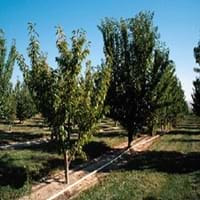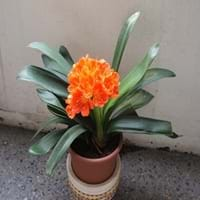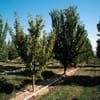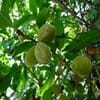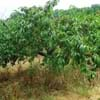Life Span
Perennial
Perennial
Type
Fruit
Bulb or Corm or Tuber
Origin
Hybrid origin, Western Asia
South Africa
Types
Sweet cherry, Black cherry, Virginia bird cherry
Not Available
Habitat
Terrestrial
Temperate Regions, Woodlands
USDA Hardiness Zone
5-8
9-11
Sunset Zone
4, 5, 6, 7, 15, 16, 17
21,22
Habit
Upright/Erect
Clump-Forming
Flower Color
Not Available
Yellow, Red, Orange
Flower Color Modifier
Bicolor
Bicolor
Fruit Color
Not Available
Red
Leaf Color in Spring
Not Available
Dark Green
Leaf Color in Summer
Not Available
Light Green
Leaf Color in Fall
Not Available
Several shades of Green
Leaf Color in Winter
Light Green
Light Green
Leaf Shape
Oblong
Long Linear
Plant Season
Spring, Summer, Fall
Spring, Winter
Sunlight
Full Sun, Partial Sun
Partial shade, Full Shade
Type of Soil
Clay, Loam, Sand
Loam, Sand
The pH of Soil
Acidic, Neutral
Acidic, Neutral
Soil Drainage
Average
Well drained
Bloom Time
Spring
Early Spring, Spring, Late Spring, Winter, Late Winter
Tolerances
Drought
Drought
Where to Plant?
Ground
Container, Ground
How to Plant?
Budding, Grafting
Seedlings, Transplanting
Plant Maintenance
Medium
Medium
Watering Requirements
Average Water Needs
Water more in summer
In Summer
Lots of watering
Lots of watering
In Spring
Moderate
Moderate
In Winter
Average Water
Average Water
Soil pH
Acidic, Neutral
Acidic, Neutral
Soil Type
Clay, Loam, Sand
Loam, Sand
Soil Drainage Capacity
Average
Well drained
Sun Exposure
Full Sun, Partial Sun
Partial shade, Full Shade
Pruning
Prune in winter, Remove branches that rub together, Remove damaged leaves, Remove dead branches, Remove dead leaves, Remove dead or diseased plant parts
Remove damaged leaves, Remove dead branches, Remove dead leaves
Fertilizers
All-Purpose Liquid Fertilizer, Fertilize in early spring
fertilize in growing season
Pests and Diseases
Red blotch
Red blotch
Plant Tolerance
Drought
Drought
Flower Petal Number
Not Available
Single
Foliage Texture
Not Available
Coarse
Foliage Sheen
Not Available
Glossy
Attracts
Aphids, Birds, Woodpeckers
Insects
Allergy
Not Available
Asthma, breathing problems, Itchiness
Aesthetic Uses
Not Used For Aesthetic Purpose
Beautification, Landscape Designing, Showy Purposes, Used for decorating walls, fences, gates, hedges, etc.
Beauty Benefits
Anti-ageing, Good for skin and hair, Promotes healthy skin, Skin cleanser
Not Available
Environmental Uses
Air purification, Food for birds, Food for insects, Nesting sites for birds, Shadow Tree, Windbreak
Air purification, Food for insects, Prevent Soil Erosion
Medicinal Uses
Anemia, anti-cancer, Arthritis, Cardiovascular problems, Migraines, Muscle Pain, Weight loss
No Medicinal Use
Part of Plant Used
Fruits
Flowers
Other Uses
Food for animals, Food for insects, Used for its medicinal properties
Decoration Purposes, Showy Purposes, Used as Ornamental plant
Used As Indoor Plant
No
Yes
Used As Outdoor Plant
Yes
Yes
Garden Design
Edible, Fruit / Fruit Tree, Shade Trees, Topiary / Bonsai / Espalier
Container, Feature Plant, Foundation, Houseplant, Mixed Border
Botanical Name
PRUNUS avium 'Bing'
CLIVIA miniata
Common Name
Bing Cherry, Sweet Cherry
Clivia
In Hindi
Bing Cherry Tree
Clivia
In German
Bing Kirschbaum
Clivia
In French
Bing Cherry Tree
Clivia
In Spanish
Bing Cherry Tree
Clivia
In Greek
Bing Cherry Tree
κλίβια
In Portuguese
Cherry Tree Bing
Clivia
In Polish
Bing Cherry Tree
Clivia
In Latin
Bing Cherry ligno
Clivia
Phylum
Magnoliophyta
Magnoliophyta
Class
Magnoliopsida
Liliopsida
Order
Rosales
Asparagales
Family
Rosaceae
Liliaceae
Clade
Angiosperms, Eudicots, Rosids
Angiosperms, Monocots
Tribe
Not Available
Not Available
Subfamily
Not Available
Amaryllidoideae
Number of Species
Not Available
Not Available
Season and Care of Bing Cherry and Clivia
Season and care of Bing Cherry and Clivia is important to know. While considering everything about Bing Cherry and Clivia Care, growing season is an essential factor. Bing Cherry season is Spring, Summer and Fall and Clivia season is Spring, Summer and Fall. The type of soil for Bing Cherry is Clay, Loam, Sand and for Clivia is Loam, Sand while the PH of soil for Bing Cherry is Acidic, Neutral and for Clivia is Acidic, Neutral.
Bing Cherry and Clivia Physical Information
Bing Cherry and Clivia physical information is very important for comparison. Bing Cherry height is 3,200.00 cm and width 150.00 cm whereas Clivia height is 30.50 cm and width 25.40 cm. The color specification of Bing Cherry and Clivia are as follows:
Bing Cherry flower color: Not Available
Bing Cherry leaf color: Not Available
Clivia flower color: Yellow, Red and Orange
- Clivia leaf color: Dark Green
Care of Bing Cherry and Clivia
Care of Bing Cherry and Clivia include pruning, fertilizers, watering etc. Bing Cherry pruning is done Prune in winter, Remove branches that rub together, Remove damaged leaves, Remove dead branches, Remove dead leaves and Remove dead or diseased plant parts and Clivia pruning is done Remove damaged leaves, Remove dead branches and Remove dead leaves. In summer Bing Cherry needs Lots of watering and in winter, it needs Average Water. Whereas, in summer Clivia needs Lots of watering and in winter, it needs Average Water.
